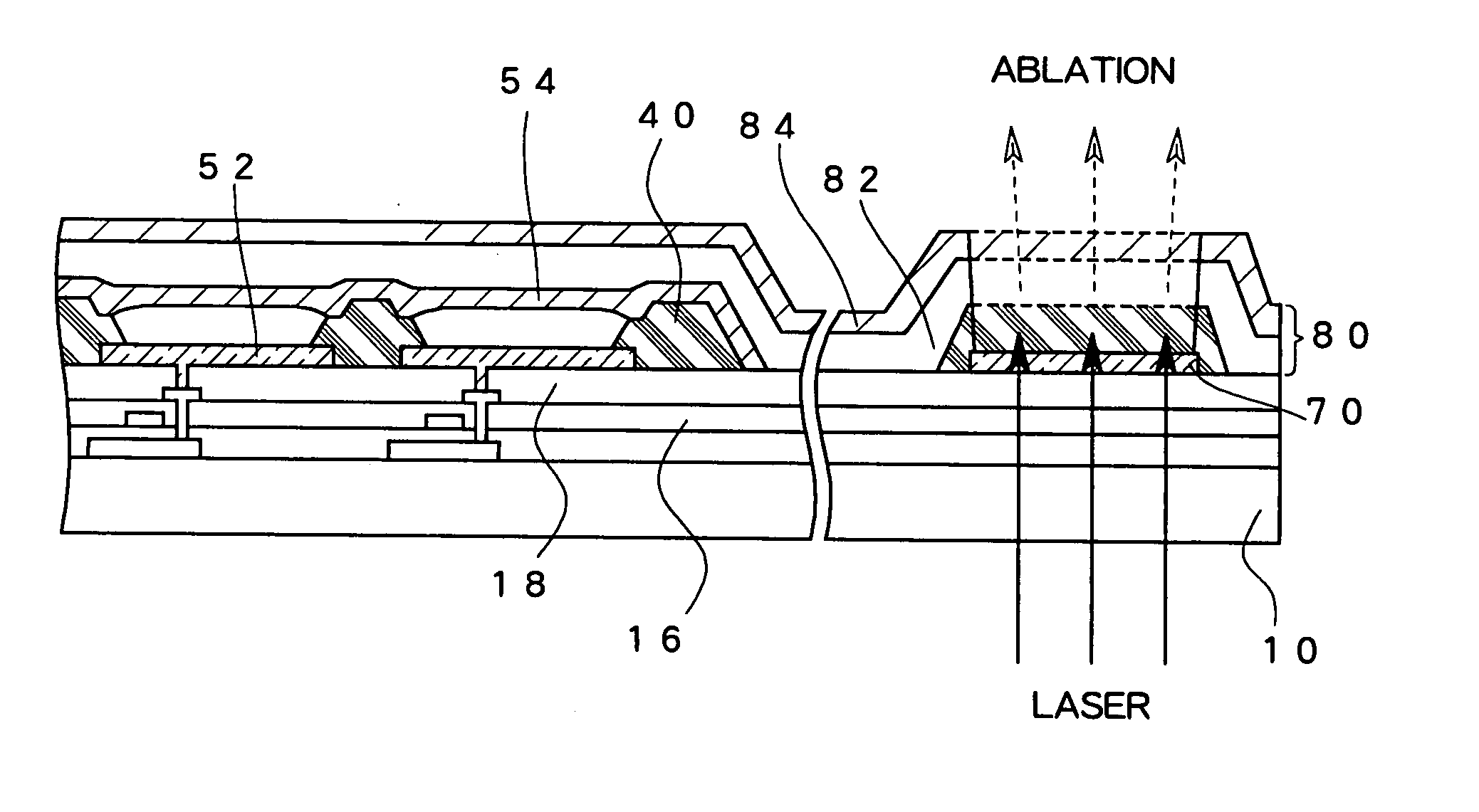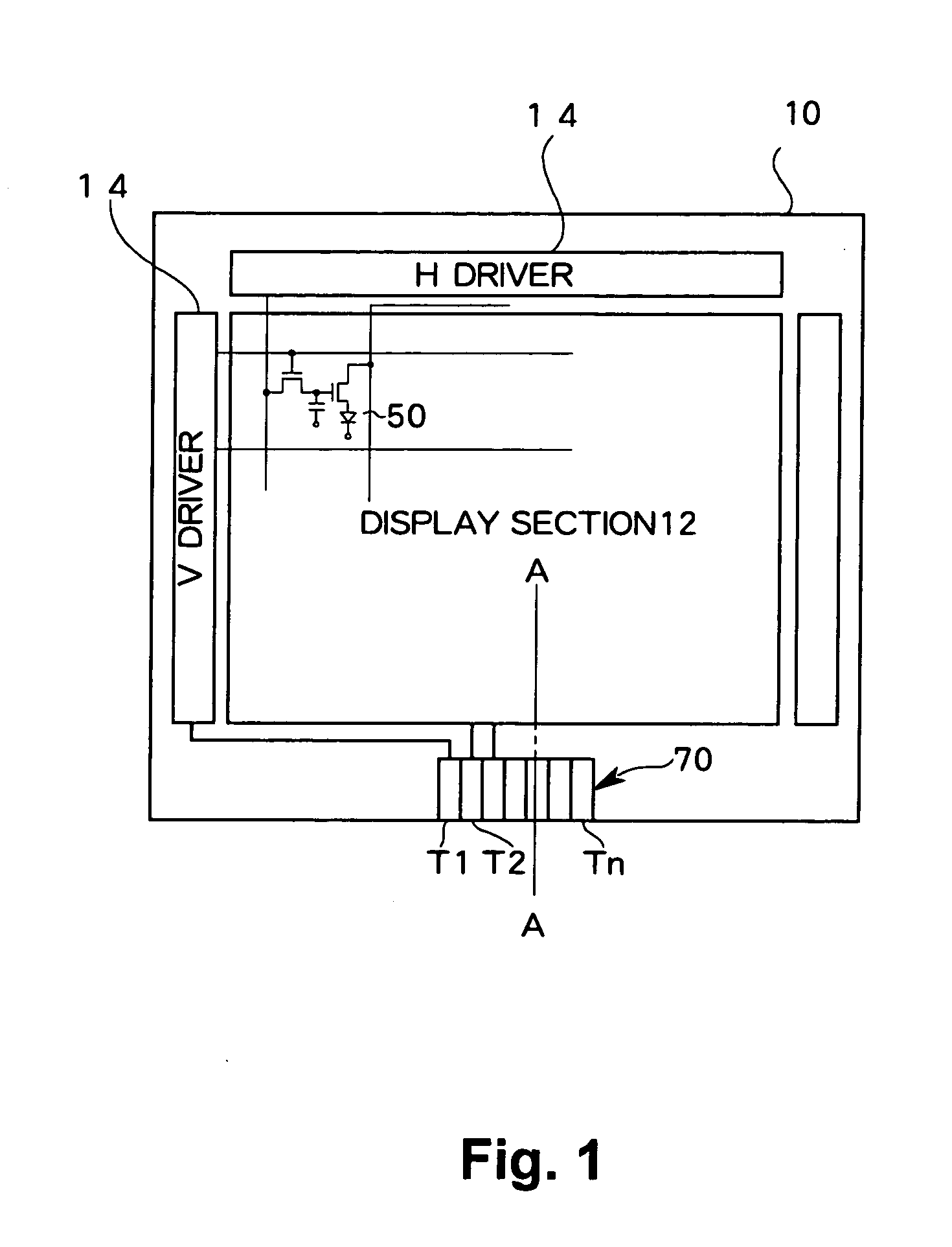Method for manufacturing organic electroluminescence panel
a technology of electroluminescence panel and organic material, which is applied in the direction of transportation and packaging, nuclear engineering, railway signalling, etc., can solve the problems of low mechanical strength of organic el element, inability to form protection film, and easy degradation of organic layer by moisture and oxygen
- Summary
- Abstract
- Description
- Claims
- Application Information
AI Technical Summary
Benefits of technology
Problems solved by technology
Method used
Image
Examples
Embodiment Construction
[0026] Preferred embodiments of the present invention (hereinafter simply referred to as "embodiments") will now be described with reference to the drawings.
[0027] FIG. 1 is a diagram schematically showing a planar structure of an organic EL panel according to an embodiment of the present invention. FIG. 2 is a cross sectional view along a line A-A in FIG. 1.
[0028] A display section 12 in which a plurality of pixels are provided is formed over a panel substrate 10 made of a material such as glass. An organic EL element 50 is provided in each pixel. The organic EL element 50 has a structure in which an organic layer having emissive molecules is provided between a lower electrode and an upper electrode.
[0029] In this embodiment, the organic EL panel is of an active matrix type, and a switching element (here, a thin film transistor (TFT)) for individually controlling emission of an organic EL element 50 is formed in each pixel. In addition, one of the upper electrode and the lower elec...
PUM
 Login to View More
Login to View More Abstract
Description
Claims
Application Information
 Login to View More
Login to View More - R&D
- Intellectual Property
- Life Sciences
- Materials
- Tech Scout
- Unparalleled Data Quality
- Higher Quality Content
- 60% Fewer Hallucinations
Browse by: Latest US Patents, China's latest patents, Technical Efficacy Thesaurus, Application Domain, Technology Topic, Popular Technical Reports.
© 2025 PatSnap. All rights reserved.Legal|Privacy policy|Modern Slavery Act Transparency Statement|Sitemap|About US| Contact US: help@patsnap.com



